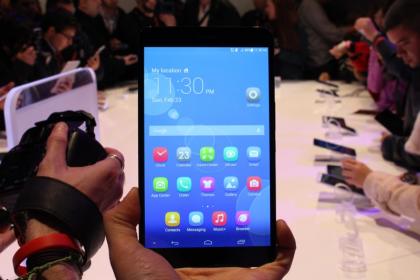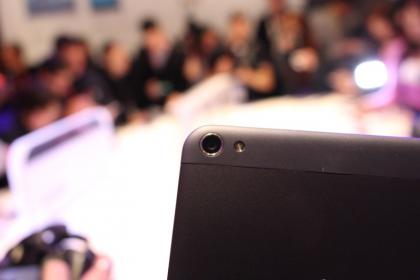Huawei MediaPad X1 review

HANDS ON REVIEW: Huawei's thinnest and lightest tablet is also a smartphone with the world's largest display? The MediaPad X1 blurs lines with its gorgeous looks and compact dimensions
Huawei is best known for its smartphones, but that didn’t stop the MediaPad X1 tablet from stealing the limelight at the Chinese company’s Mobile World Congress press conference. It blurs the lines between phone and tablet like nothing that comes before it, with a 7in display and the ability to make calls, in a device that will still fit comfortably in a pocket.

At 7.18mm thick, the MediaPad X1 is the “slimmest tablet in the world” according to Huawei, and we’re inclined to agree; it’s thinner than both Apple’s iPad Mini with Retina Display and Google’s Nexus 7. The company has managed this by slimming the bezels on either side of the screen to an incredible 2.99mm. It means you can hold the device in one hand as you would a smartphone, comfortably and without having to stretch your fingers. It’s 30% smaller than an iPad Mini, and 30% lighter too at 239g. The full metal body gives it a premium feel that we would argue comes close to matching the likes of Apple – a huge leap for a company best known for budget handsets here in the UK.

That doesn’t leave much room for your fingers when using the tablet, so Huawei is using “Intelligent grip suppression” to only recognise the touch inputs you intend – not the accidental ones from your thumb gripping the screen edge. It worked well during our brief hands-on, letting us keep one thumb in place without knocking the cursor around when playing a game.
The screen itself is a 7in, Full HD panel with a 1,920×1,200 resolution. That equates to a pixel density of 323 pixels per inch (PPI), above the magic number Apple calls “retina” and beyond the point where the eyes can detect individual pixels. There’s no question it looks very sharp, displaying text and images with crisp detail. The backlight is bright too, reaching 515nit at its maximum level which is well beyond what we deem necessary to use outdoors.

Huawei has fitted a 13-megapixel Sony EXMOR RS back side illuminated (BSI) rear camera and 5-megapixel front sensor, which it hopes will appeal to any fans of selfie photos. We’ve seen the sensor in action on Sony’s own Xperia Z1 Compact, but we’ll have to see whether Huawei has tweaked any extra performance out of it – or conversely, worsened picture quality.
The only stumbling block we can see is Huawei’s custom Android skin, known as the Emotion UI. It ditches the app drawer, placing all your apps on multiple home screens. This feels very cluttered, but you can soon clear things up using folders. The models on display were running Android 4.2 Jelly Bean underneath, and we have had no word from Huawei on whether we can expect an update to Android 4.4 KitKat in the future.

The quad-core 1.6GHz processor kept things running smoothly throughout our hands-on demo, and the 5,000mAh battery should be good for up to five hours of video according to Huawei. The company claims to have made a 30% improvement in battery life performance for its latest generation handsets, but again we’ll have to wait for a full review to put that claim to the test. It also supports reverse charging, letting you use the remaining tablet battery to charge a smartphone.
However, with a category 4 LTE modem and SIM card slot, you may not need to carry a smartphone as well as an X1; it does everything you would expect from a phone, just with the screen size of a tablet.
We’ve been impressed by Huawei handsets before, but have ended up disappointed when they never make it on sale in the UK. Hopefully the MediaPad X1 will arrive on our shores, as it’s one of the company’s most exciting products to date. It will cost €399 for a 16GB version when it goes on sale in Europe later in the year.









